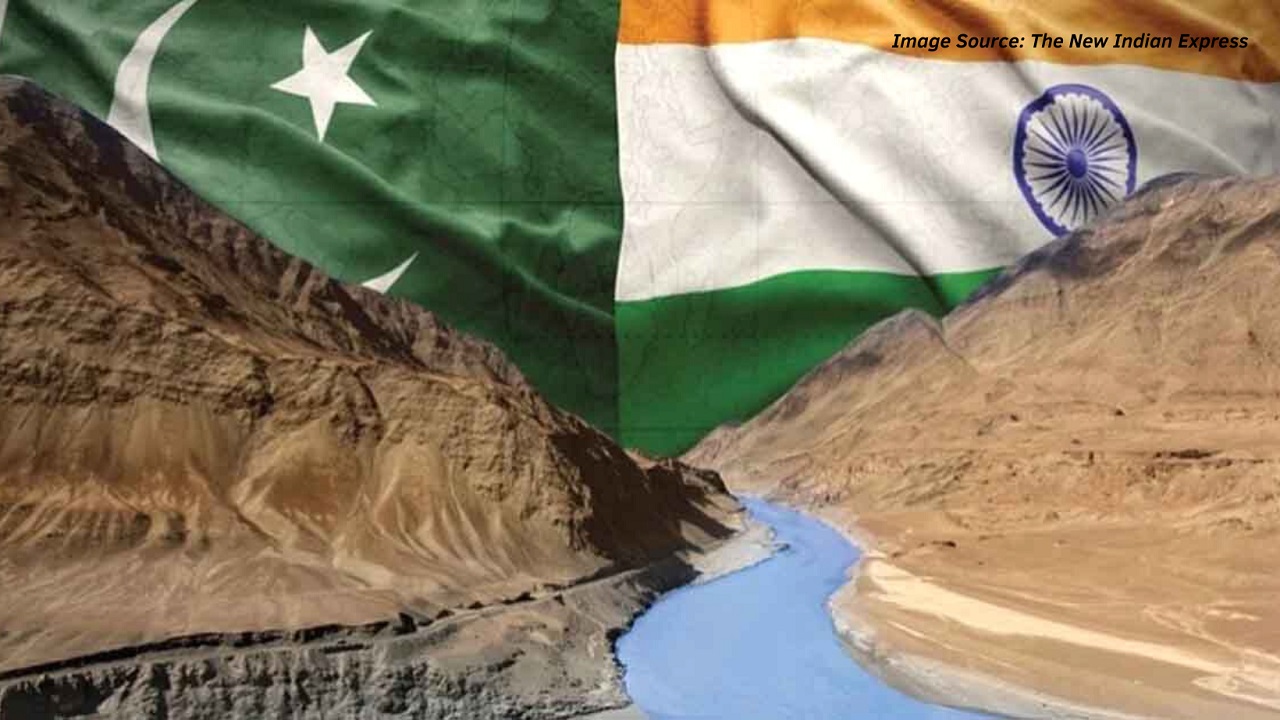From Bilateralism to Brinkmanship: The Fallout of Simla Agreement Suspension
Context
-
On the backdrop of a terrorist attack in Pahalgam, which led to nationwide mourning in India, the Government of Pakistan has unilaterally suspended the 1972 Simla Agreement.
-
The move reflects a reaction to India’s internal security measures in Jammu & Kashmir, especially following developments like the abrogation of Article 370 in 2019.
-
This development holds critical geopolitical significance, as it threatens to dismantle a long-standing diplomatic framework between India and Pakistan, raising fresh concerns over LoC stability and regional peace.
About the Simla Agreement (1972)
The Simla Agreement was a bilateral treaty signed on July 2, 1972, by:
-
Indira Gandhi (Prime Minister of India)
-
Zulfikar Ali Bhutto (President of Pakistan)
It was a post-war peace effort following the 1971 Indo-Pak War, which led to the creation of Bangladesh.
Key Objectives
-
Restoration of peace and normalization of relations
-
Establishing a framework for future bilateral dispute resolution
-
Ensuring ceasefire line stability, redefined as Line of Control (LoC)
Main Provisions of the Simla Agreement
-
Bilateralism as the Core Principle
All disputes, including Kashmir, were to be resolved through bilateral talks, explicitly excluding any third-party intervention. -
Line of Control (LoC)
-
The ceasefire line established after the 1971 war was converted into the LoC.
-
Both parties agreed not to alter the LoC unilaterally, maintaining the status quo.
-
-
Return of Captured Territory
-
India returned over 13,000 sq. km of territory captured during the 1971 war.
-
However, India retained strategic areas like Turtuk and Chalunka.
-
-
Respect for Sovereignty and Non-Interference
-
Both countries pledged not to interfere in each other’s internal affairs and to respect territorial integrity.
-
-
Commitment to Peaceful Coexistence
-
Both reaffirmed adherence to the UN Charter, emphasizing the use of peaceful means in dispute resolution.
-
Why Pakistan Suspended the Simla Agreement
Pakistan’s decision appears symbolic, but has serious diplomatic implications.
Possible Reasons
-
Reaction to India’s internal measures in J&K, including the 2019 abrogation of Article 370.
-
Stalled bilateral dialogue, with no recent progress on diplomatic engagement.
-
Domestic political compulsions in Pakistan amid internal instability.
-
Strategic intent to internationalise the Kashmir issue through forums like the UN or OIC.
Key Takeaways
-
It reflects Pakistan’s dissatisfaction with the bilateral mechanism.
-
May be aimed at gaining global sympathy or leveraging third-party mediation, which India strongly opposes.
Implications on the Line of Control (LoC)
The Simla Agreement had served as a restraining mechanism for LoC hostilities. Its suspension raises the following concerns:
Strategic and Security Impacts
-
Increased Risk of Ceasefire Violations
-
Without the agreement, mutual restraint may decline.
-
Potential for frequent skirmishes, infiltration, and escalation.
-
-
Loss of Diplomatic Buffer
-
The agreement provided a framework for de-escalation during crises.
-
Suspension removes this mechanism, encouraging brinkmanship.
-
-
Third-party Engagement Risk
-
Pakistan may now seek external mediation, which goes against India’s stated foreign policy principle of bilateralism.
-
India’s Position and Diplomatic Outlook
India’s Traditional Stand
-
India has consistently upheld bilateralism as the sole approach for engaging with Pakistan.
-
Firmly opposes external involvement in the Kashmir issue.
Current Implications
-
India is yet to issue a formal response, but the move is expected to:
-
Shrink space for future dialogue
-
Undermine mutual diplomatic trust
-
Reinforce India’s global argument that Pakistan is backtracking from peaceful commitments
-
Possible Scenarios Ahead
-
Escalation
-
Potential rise in cross-border tensions, especially during elections or terror attacks.
-
-
Global Diplomatic Pressure
-
External powers (e.g., US, China, Gulf countries) may push for a new framework of engagement.
-
Conclusion
The suspension of the 1972 Simla Agreement by Pakistan represents a strategic rupture in bilateral diplomacy. It removes a key peace architecture, disrupts the existing LoC framework, and reopens the possibility of internationalizing the Kashmir issue.
For India, this development is a challenge to its foundational principle of bilateralism, and it may necessitate both diplomatic recalibration and military preparedness.
In the broader context, the move reflects how regional instability, unresolved disputes, and internal pressures can reverse decades of diplomacy, raising the stakes for peace and security in South Asia.




Comments (0)